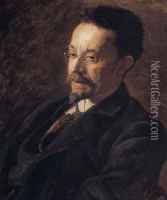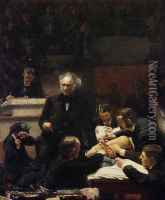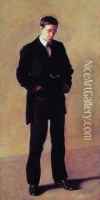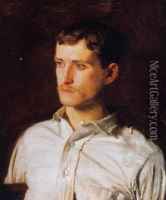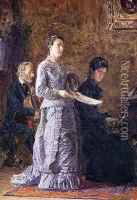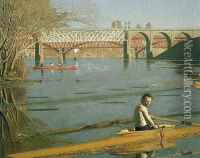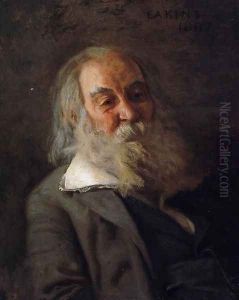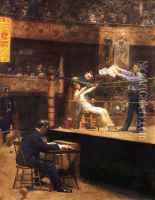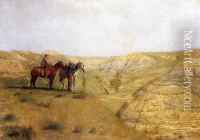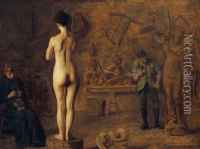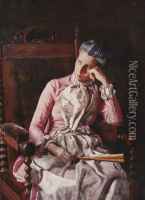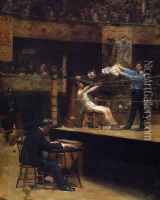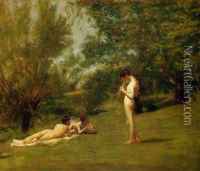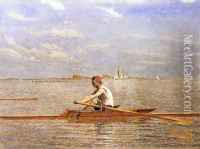Thomas Cowperthwait Eakins Paintings
Thomas Cowperthwait Eakins was an American realist painter, photographer, sculptor, and fine arts educator. He is widely acknowledged as one of the most important artists in American art history. Born on July 25, 1844, in Philadelphia, Pennsylvania, Eakins was raised in a nurturing environment that encouraged his interest in the arts. He studied at the Pennsylvania Academy of the Fine Arts (PAFA) before traveling to Paris to study at the École des Beaux-Arts under Jean-Léon Gérôme, a prominent French realist painter.
Eakins returned to the United States with a profound understanding of anatomy and a deep appreciation for realism, which influenced his subsequent work. He focused on the human figure, often capturing the essence of American life in the late 19th century through his paintings. His subjects included athletes, musicians, doctors, and scholars, portraying them with a level of detail and accuracy that was unparalleled at the time.
One of his most famous works is 'The Gross Clinic' (1875), a painting that depicts Dr. Samuel D. Gross, a renowned surgeon, conducting a surgical operation. The painting is celebrated for its realistic representation and emotional intensity. Eakins's commitment to truth and his unflinching approach to controversial subjects were both admired and criticized during his career.
As an educator, Eakins taught at PAFA, where he implemented a rigorous curriculum based on the study of the human anatomy, dissection, and the use of photography as a study aid. His teaching methods were innovative and influential, but they also sparked controversy, leading to his resignation in 1886.
Throughout his career, Eakins also explored photography, using it to study motion and the human form. His work in this medium complemented his paintings and helped him to capture movement in a way that had never been seen before in art.
Eakins's dedication to portraying the truth of the human experience made him a pivotal figure in the transition from the idealism of neoclassical and romantic art to the more objective and scrutinizing eye of realism. Despite the controversy he faced in his lifetime, his legacy as a profound influence on American art and education endures. Thomas Eakins passed away on June 25, 1916, in Philadelphia, leaving behind a body of work that continues to be celebrated for its boldness and authenticity.

